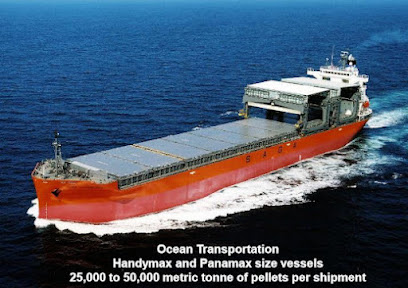"Allah who makes
fire for you from green wood, then you kindle (fire) from it."
(QS. Yaasin (36): 80)

The sun was created by Allah SWT as the main source of energy for humans and living things on earth. It takes about 8 minutes for sunlight to reach the earth and is converted by plants into a food source so that it can be consumed by animals and humans. Humans also get food from animal sources. The more sunlight, the more can be converted by plants through the process of photosynthesis. Without the sun, plants die, animals die, humans die so that there will be no life on earth. Fossil fuels are essentially a source of energy from plants and animals in the past. Mining and use of fossil fuels will release a number of greenhouse gases (GHG) which increase the earth's temperature which at a certain level is dangerous for the earth's population itself. Efforts to overcome this are by using non-fossil energy and renewable energy so as not to contribute to increasing the concentration of GHG in the atmosphere which increases the earth's temperature.

From plants or trees can be directly used as a source of energy or fuel, namely firewood. Derivatives or energy products from plants are also very diverse and can meet all human needs, both energy in the form of solid fuels, liquid fuels and gas fuels. The production of firewood, wood chips, wood briquettes, sawdust, torrified biomass to charcoal are a number of solid fuel products. While the production of biooil, bioethanol, biodiesel, renewable diesel / green diesel, and bioavtur / bio jet fuel are a number of liquid fuels. And biogas and bio-syngas are gas fuels that can be produced from the original material in the form of plants.
A number of conversion techniques based on physics, chemistry and biology are needed for the conversion. The use of appropriate plant species is also needed to facilitate the conversion, for example for the production of solid fuels, biomass sources such as wood are needed, while if the target is liquid fuel, then the type of oil-producing plants that need to be pursued. Conversion from solid fuels to liquid or gas fuels can also be done but in general the longer and more complicated the process, the more expensive the production costs will be. But still, energy plantations are the basis for all of that.

Popular and fairly easy biomass processing is to make wood chips with size reduction then wood pellets and wood briquettes through biomass densification. Furthermore, to convert sugary biomass into ethanol with fermentation and azeotropic distillation, convert lignin biomass (lignocellulosic biomass) into ethanol with enzymatic hydrolysis reactions followed by fermentation and azeotropic distillation. Converting woody biomass into fuel with a thermal process can be burned directly or if you want to make charcoal, concentrate the fixed carbon, namely by pyrolysis or carbonization, and if you want to maximize liquid products / bio-oil / pyro-oil, namely by fast pyrolysis and if you want to maximize gas products, namely by gasification. And so that the characteristics of the biomass are like hydrophobic coal, the torrefaction or mild-pyrolysis process can be carried out. Torrefaction and densification are usually carried out together to optimize the biomass fuel product.

With gas to liquid (GTL) namely the gasification process and followed by the Fisher - Tropsch process, bio-ethanol, biodiesel and bioavtur / bio jet fuel can be produced. While from groups of plants that produce oil such as palm oil, biodiesel can be made especially with the transesterification or estran (esterification plus transesterification) process. Even used oil or used cooking oil / used cooking oil and miko (minyak kotor) / dirty oil or PAO (palm acid oil) can also be used for biodiesel / green diesel or further processed into bio-jet fuel / bio-avtur with the HVO / HEFA - SPK (Hydro-processed Esters and Fatty Acids-Synthesized Paraffinic Kerosene) process.

So basically, biomass from trees can be processed into various forms of energy or fuel needed by humans. In addition to being used directly as a heat source, this energy can also be converted into mechanical energy or electrical energy, for example biofuel-fueled vehicles to biomass power plants. So the source of energy throughout the ages stored in plants is this biomass as stated by Allah SWT in the verse above and there is no doubt whatsoever about it. Indonesia as a tropical country is a "heaven" for the production of biomass because of the rays of sunlight throughout the year and adequate rainfall and extensive land. The storage of energy in plants from sunlight is also likened to a battery that can be used anytime and anywhere for more details read here.

Another important thing to note for the creation of energy plantations or biomass plantations is the status of the land used. The land must not be from deforestation or land conversion (land use change) that damages the environment. Industrial plantation forests (HTI) that are in accordance with their designation can be used as energy plantations. In addition, biomass for producing energy can also be cultivated on critical land, or referred to as 'unproductive' land. The Indonesia Ministry of Environment and Forestry (KLHK) estimates that critical land in Indonesia in 2016 was 24.3 million hectares (Times Indonesia, 2017). This is a very large area, and overall Indonesia's territory is large enough to provide biomass for renewable energy production.




















































